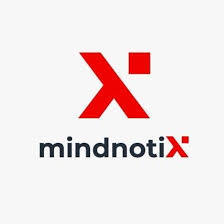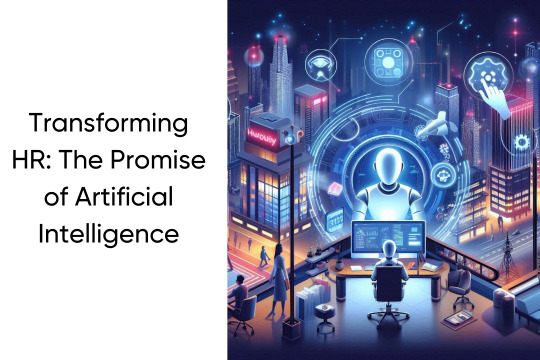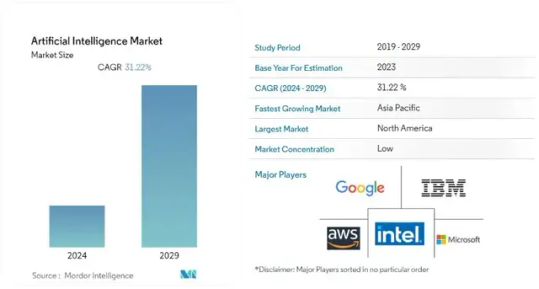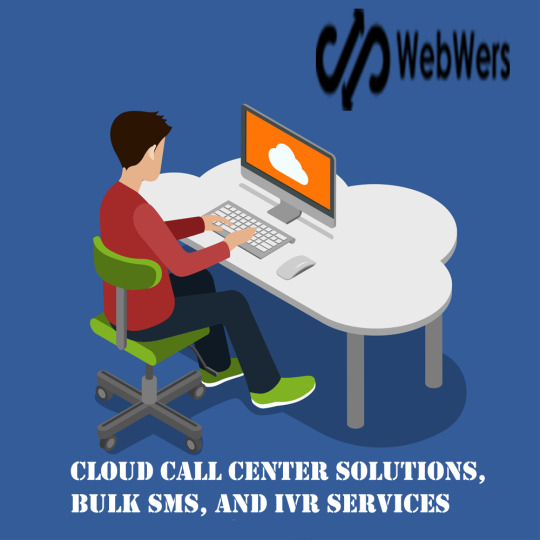#Workforce Cost Analytics
Explore tagged Tumblr posts
Text
Workforce Cost Analytics Software Solution
Discover a smarter way to manage workforce costs with ThirdEye AI. Our cutting-edge software transforms raw data into strategic insights, enabling businesses to identify inefficiencies and optimize spending. Make informed decisions, streamline operations, and enhance profitability. Revolutionize your approach to workforce management with ThirdEye AI - the future of intelligent business solutions.
#Workforce Cost Analytics#Workforce Cost Analytics solution#Workforce Analytics Software#Workforce analytics services#Workforce Management Analytics#Information Security Analysts#What is the workforce analytics?
0 notes
Text
What’s Missing From Your Recruitment Metrics? Tracking ‘Cost-Per-Quality-Applicant’ Can Bridge the Gaps
Once considered groundbreaking for the HR industry, data and analytics are now a key business driver for companies looking to maximize budget, improve hiring KPIs, strengthen employee retention and engagement, and more. In today’s market, most businesses are tracking their recruitment marketing investments to get a better understanding of their costs and performance in order to enhance their talent acquisition (TA) strategy. These metrics, including job ad impressions, clicks, and application volume, allow HR and TA professionals to make data-driven decisions that strategically inform their campaigns.

While there is a plethora of insights to be gained from these various advertising metrics, it’s crucial that businesses track quality data allowing them to connect the dots between the top-of-funnel campaign performance and the recruitment process.
Understanding Current Recruitment Metrics
Today’s labor market leaves many recruiting teams stretched thin and struggling to get the right amount of HRIS or data analytics support to fully grasp the return on investment from their recruitment advertising.
The most basic metrics, while still helpful, focus more on quantity over quality. Using this approach can result in hidden costs and inefficiencies as many HR professionals are left without specific insights about what channels are driving quality candidates to their career sites.
Oftentimes, the go-to performance metrics for recruitment advertising campaigns are impressions or clicks, measuring how many people have seen or engaged with a particular campaign. However, the conversion from impression to click (known as click-through rate or CTR) does not typically equate to a full application or, more importantly, a quality application. There’s a large disconnect in the industry as to which sources are driving applicants to make it further in the recruitment process, but analytics tied to quality metrics can help bridge this gap.
The Call to Measure Quality Metrics
Quality metrics take into account an organization’s recruitment operations and functionality, providing insight into the dynamic nature of priority job openings that attract top talent. It’s important to keep in mind that “quality” is not a one-size-fits-all.
The quality metric that works for a particular organization can and likely will be different from others depending on specific objectives and the recruitment process. For instance, evaluating cost per applicant (CPA), cost per quality applicant (CPQA), and cost per hire (CPH) can help produce more accurate metrics than simply relying on time-to-fill or quantity of applicants.
CPQA is a significant measurement because it provides insight into how much a company has invested in a campaign to yield a “qualified” candidate for a particular role. Additionally, evaluating CPH identifies the cost of bringing a candidate into the recruiting process and ultimately, over the finish line as a hire for an organization. Knowing how much it costs to secure a qualified applicant and ultimately a hire provides essential insight for HR teams to forecast recruitment budgets based on the number of hires needed, better align with workforce plans and long-term business goals, and create enhanced strategies that further optimize output via recruitment marketing channels.
Transform Business Operations with CPQA
Given a better understanding of advertising and applicant performance, teams can level up their recruitment marketing strategy even further. Leveraging reporting through an applicant tracking system (ATS) allows visibility into quality metrics so HR teams can better execute their recruiting initiatives and hiring objectives that correspond with overall business operations.
Having an understanding of the channels that drive more qualified candidates can positively impact job satisfaction. By attracting better-suited candidates, organizations can improve long-term employee retention. Under these circumstances, business operations are enhanced because of cost-effective recruitment sources and reduced turnover rates.
Lastly, and of equal importance, data-driven insights provide enriched strategic planning that benefits employer branding. Developing recruitment strategies that align with a company’s growth plan, identity, and offerings only maintains a stronger feedback loop of quality candidates.
How to Implement CPQA into the Recruitment Process
To measure CPQA, one must first understand an organization’s unique recruitment process. This may involve working with the ATS administrator or HRIS team to define what the various stages of the recruitment process look like. The stages within a sample recruitment workflow could be New Applicant, Initial Review, Phone Screen, Hiring Manager Review, Hiring Manager Interview, Offer, and Hire. Keep in mind, depending on organizational structure, the stages within this process could vary between different groups or functional areas.
Thirdly, track applicants associated with each recruitment channel. When activating recruitment marketing campaigns, establish source tracking tied to each advertising channel, as defined within the ATS. Since each ATS captures source tracking differently, pay attention to how these source codes are appended to campaign URLs. The origination of a job seeker’s click can offer further insight into what advertising channels are working. Again, this may involve working internally with the HRIS team and/or recruitment marketing agency partner.
From there, measure costs and calculate CPQA/CPH for different channels. Ensure that there is a handle on the costs tied to each advertising channel the team is leveraging for recruitment marketing efforts. Capturing and centralizing these costs is paramount to measuring CPQA and ultimately CPH.
Quality is Calling: Reevaluate Your Metrics Today
In today’s quickly evolving job market, these types of data-driven insights provide organizations the ability to make strategic decisions to revolutionize the workforce, HR teams, and business operations. Better analytics and a more dynamic recruiting channel strategy allow organizations to shift their budget toward more flexible pay-per-performance and employer branding channels instead of being locked away in underperforming initiatives. Begin capturing quality metrics to build better recruitment marketing campaigns that reinforce employer brand and increase quality applicant flow, leading to more easily filled roles and better return on investment.
Explore Hrtech Articles for the latest Tech Trends in Human Resources Technology
#HR Tech#Technology#Recruitment Metrics#Cost-Per-Quality-Applicant#Hiring Efficiency#Talent Acquisition#Workforce Analytics
0 notes
Text
Automatisasi Bisnis dengan Kekuatan AI
Automatisasi bisnis telah menjadi topik utama dalam dunia usaha modern. Dengan kemajuan teknologi kecerdasan buatan (AI), perusahaan kini memiliki peluang untuk mengoptimalkan proses mereka, meningkatkan efisiensi, dan mengurangi biaya operasional. AI tidak hanya menggantikan tugas-tugas manual yang berulang tetapi juga membawa kemampuan analisis data yang canggih, prediksi yang akurat, dan…
#AI automation#AI benefits#AI challenges#AI in banking#AI in business#AI in logistics#AI in retail#AI training#AI trends 2024#AI-powered tools#artificial intelligence#business automation#business innovation#cost reduction#customer experience#ethical AI#future of AI#operational efficiency#predictive analytics#scalable solutions#smart inventory management#supply chain management#workforce automation
0 notes
Text
How AI is Changing Jobs: The Rise of Automation and How to Stay Ahead in 2025
AI and Jobs

Artificial Intelligence (AI) is everywhere. From self-checkout kiosks to AI-powered chatbots handling customer service, it’s changing the way businesses operate. While AI is making things faster and more efficient, it’s also making some jobs disappear. If you’re wondering how this affects you and what you can do about it, keep reading — because the future is already here.
The AI Boom: How It’s Reshaping the Workplace
AI is not just a buzzword anymore; it’s the backbone of modern business. Companies are using AI for automation, decision-making, and customer interactions. But what does that mean for jobs?
AI is Taking Over Repetitive Tasks
Gone are the days when data entry, basic accounting, and customer support relied solely on humans. AI tools like ChatGPT, Jasper, and Midjourney are doing tasks that once required an entire team. This means fewer jobs in these sectors, but also new opportunities elsewhere.
Companies are Hiring Fewer People
With AI handling routine work, businesses don’t need as many employees as before. Hiring freezes, downsizing, and increased automation are making it tougher to land a new job.
AI-Related Jobs are on the Rise
On the flip side, there’s massive demand for AI engineers, data scientists, and automation specialists. Companies need people who can build, maintain, and optimize AI tools.
Trending AI Skills Employers Want:
Machine Learning & Deep Learning
Prompt Engineering
AI-Powered Marketing & SEO
AI in Cybersecurity
Data Science & Analytics
Click Here to Know more
The Decline of Traditional Job Offers
AI is shaking up industries, and some job roles are disappearing faster than expected. Here’s why new job offers are on the decline:
AI-Driven Cost Cutting
Businesses are using AI to reduce operational costs. Instead of hiring new employees, they’re investing in AI-powered solutions that automate tasks at a fraction of the cost.
The Gig Economy is Replacing Full-Time Jobs
Instead of hiring full-time staff, companies are outsourcing work to freelancers and gig workers. This means fewer stable job opportunities but more chances for independent workers.
Economic Uncertainty
The global economy is unpredictable, and businesses are cautious about hiring. With AI improving efficiency, companies are choosing to scale down their workforce.
Click Here to Know more
Preparing for an AI-Driven Future
Feeling worried? Don’t be. AI isn’t just taking jobs — it’s also creating new ones. The key is to stay ahead by learning the right skills and adapting to the changing landscape.
1. Learn AI and Data Analytics
The best way to future-proof your career is to understand AI. Free courses on platforms like Coursera, Udemy, and Khan Academy can get you started.
2. Develop Soft Skills AI Can’t Replace
AI is great at automation, but it lacks emotional intelligence, creativity, and critical thinking. Strengthening these skills can give you an edge.
3. Embrace Remote & Freelance Work
With traditional jobs shrinking, freelancing is a great way to stay flexible. Sites like Upwork, Fiverr, and Toptal have booming demand for AI-related skills.
4. Use AI to Your Advantage
Instead of fearing AI, learn how to use it. AI-powered tools like ChatGPT, Jasper, and Canva can help boost productivity and creativity.
5. Never Stop Learning
Technology evolves fast. Stay updated with new AI trends, attend webinars, and keep improving your skills.
Click Here to Know more
Final Thoughts
AI is here to stay, and it’s changing the job market rapidly. While some traditional roles are disappearing, new opportunities are emerging. The key to surviving (and thriving) in this AI-driven world is adaptability. Keep learning, stay flexible, and embrace AI as a tool — not a threat.
Click Here to Know more
Share this blog if you found it helpful! Let’s spread awareness and help people prepare for the AI revolution.
3 notes
·
View notes
Text
Why Payroll Outsourcing in Delhi is Essential for Business Efficiency

Streamline Your Business with Payroll Outsourcing in Delhi
As businesses expand and compliance regulations become more demanding, many organizations are now turning to payroll outsourcing in Delhi to simplify their internal operations. Managing payroll in-house can be tedious, especially when dealing with frequent legal updates, tax deductions, and employee benefits. Outsourcing this function not only ensures accuracy but also provides companies the freedom to focus on core business activities.
What is Payroll Outsourcing?
Payroll outsourcing is the process of hiring an external service provider to manage a company's entire payroll system. This includes calculating employee salaries, processing tax filings, managing provident fund (PF) and employee state insurance (ESI) contributions, generating payslips, and ensuring legal compliance. For businesses in Delhi—a city teeming with startups, SMEs, and large enterprises—this approach has become a practical necessity.
Benefits of Payroll Outsourcing
1. Cost and Time Efficiency Managing payroll internally can consume significant time and resources. With outsourcing, companies save on the cost of hiring specialized staff or purchasing expensive payroll software. It also eliminates the need for constant training to stay up-to-date with changing laws.
2. Regulatory Compliance Indian payroll laws are complex and ever-evolving. From income tax rules to statutory deductions like PF, ESI, and gratuity, compliance is critical to avoid penalties. A payroll outsourcing provider in Delhi ensures all calculations and filings are handled accurately and on time.
3. Enhanced Accuracy Manual payroll processing can lead to errors in salary calculations or tax filings. With automated systems and expert oversight, outsourced payroll services offer greater accuracy and reliability, reducing the chances of employee dissatisfaction or legal issues.
4. Data Security and Confidentiality Reputable payroll outsourcing firms use secure, cloud-based systems with encryption to protect sensitive employee data. This minimizes the risk of data breaches and ensures confidentiality is maintained at all times.
5. Scalability and Flexibility As your workforce grows or contracts, outsourcing partners can easily scale their services to match your needs. Whether you’re hiring 10 or 100 new employees, your payroll operations remain smooth and efficient.
Services Included in Payroll Outsourcing
Most payroll outsourcing providers in Delhi offer comprehensive solutions that include:
Monthly salary processing and disbursement
Payslip generation and distribution
Tax deductions and filings (TDS, PF, ESI, etc.)
Year-end tax form preparation (Form 16)
Compliance with labor laws and statutory reporting
Attendance and leave management integration
Reimbursement and bonus management
Employee helpdesk support for payroll queries
Advanced service providers may also offer integration with HR software, mobile apps for employees, and dashboards for real-time payroll analytics.
Why Delhi-Based Companies Should Consider Payroll Outsourcing
Delhi is a highly competitive and regulatory-sensitive business environment. Companies in this region must be agile and compliant while controlling costs. Payroll outsourcing is especially beneficial here because local providers have expertise in regional labor rules, state-specific regulations, and offer fast turnaround times for urgent payroll processing needs.
Additionally, Delhi is home to a wide pool of professional payroll service providers who offer tailored solutions for different industries—from IT and education to manufacturing and healthcare.
Choosing the Right Payroll Partner
Before selecting a payroll outsourcing company in Delhi, consider the following:
Experience and Reputation: Look for a provider with proven experience and client testimonials.
Technology Platform: Ensure they use a secure, modern payroll system.
Compliance Knowledge: They should stay updated with the latest changes in tax and labor laws.
Customization Options: Your business may have unique payroll structures or benefits.
Customer Support: Timely and responsive communication is essential for resolving issues quickly.
Final Thoughts
In a fast-moving market like Delhi, where talent retention, compliance, and cost control are key concerns, outsourcing payroll can offer a significant competitive advantage. It streamlines processes, ensures accuracy, and reduces operational stress—allowing companies to concentrate on strategic goals.
Whether you're a small business owner or the HR head of a growing enterprise, payroll outsourcing in Delhi could be the smartest step you take this year toward efficiency and peace of mind.
3 notes
·
View notes
Text
How Can Payout Solutions Transform Business Payments in 2024 - 2025?

In the fast-evolving landscape of digital commerce, businesses need agile and efficient systems to manage payments. Payout solutions have emerged as a cornerstone for streamlining transactions, enabling businesses to process bulk payments, vendor disbursements, and employee salaries with unparalleled ease. As we move into 2024-2025, payout solutions are set to revolutionize how businesses handle payments, with a focus on innovation, scalability, and integration.
Understanding Payout Solutions
Payout solutions refer to systems and platforms designed to automate and streamline the process of sending payments from businesses to multiple recipients, such as vendors, customers, and employees. These solutions are equipped to handle high transaction volumes, ensuring accuracy and compliance while reducing operational overhead.
Unlike traditional banking methods, payout solutions offer real-time processing, enhanced security, and seamless integration with existing business software. They have become indispensable for industries such as e-commerce, gig economy platforms, and financial services that rely heavily on efficient payment flows.
The Key Benefits of Payout Solutions
Efficiency and Automation: Payout solutions enable businesses to automate repetitive tasks, such as salary disbursements or vendor payments. This reduces manual intervention, minimizes errors, and accelerates transaction times.
Cost-Effectiveness: By consolidating and optimizing payment processes, businesses can lower administrative costs and reduce the reliance on traditional banking systems.
Global Reach: Modern payout solutions are designed to handle cross-border transactions, making them ideal for businesses with an international footprint.
Real-Time Processing: With real-time payments, recipients receive their funds instantly, improving cash flow and enhancing customer and vendor satisfaction.
Security and Compliance: Leading payout solutions prioritize data security and ensure compliance with local and international regulations, providing businesses with peace of mind.
Transformative Trends in Payout Solutions for 2024-2025
The payout solutions market is undergoing significant innovation, driven by advancements in technology and evolving business needs. Some of the key trends include:
Payment Gateway Integration: Seamless integration with payment gateways allows businesses to connect their payout systems with e-commerce platforms, accounting software, and ERP systems. This ensures smooth operations and better tracking of financial data.
Custom Solutions Services: Payment solution providers are increasingly offering tailored services to meet the specific needs of industries. Custom solutions address unique challenges, such as handling high transaction volumes for marketplaces or facilitating recurring payments for subscription-based businesses.
Artificial Intelligence and Machine Learning: AI-powered analytics help businesses identify patterns, predict payment trends, and detect fraudulent activities, making payout systems smarter and more reliable.
Blockchain for Transparency: Blockchain technology is being incorporated into payout solutions to ensure transparency, reduce fraud, and provide an immutable record of transactions.
Why Businesses Need Payout Solutions
Efficient payment management is critical to the success of any business. Delayed or inaccurate payments can harm relationships with vendors and employees and erode customer trust. By adopting advanced payout solutions, businesses can overcome these challenges while gaining a competitive edge.
For E-Commerce: Payout solutions simplify vendor disbursements, refunds, and affiliate payments, ensuring smooth operations.
For the Gig Economy: Freelancers and gig workers demand timely payments. Payout solutions ensure on-time and accurate disbursements, boosting workforce satisfaction.
For Corporates: Automating payroll processes reduces administrative effort and ensures compliance with labor laws.
The Role of Payment Solution Providers
Payment solution providers are the backbone of the payout ecosystem. They offer the tools and services needed to set up and manage efficient payout systems. By partnering with these providers, businesses can access cutting-edge technology and expert guidance to optimize their payment processes.
One standout example is Xettle Technologies, a leader in providing innovative payout and payment gateway integration services. Xettle Technologies specializes in delivering scalable and secure payout solutions that cater to businesses of all sizes. Their expertise in custom solutions services ensures that businesses can seamlessly integrate these systems into their existing workflows.
Challenges and Opportunities
While payout solutions offer numerous advantages, businesses may face challenges such as:
Integration Complexity: Implementing new payout systems may require reconfiguring existing business software.
Data Privacy: With increasing regulatory scrutiny, ensuring data protection and compliance is critical.
User Adoption: Training teams to use new payout solutions effectively can be a hurdle for organizations.
However, these challenges are outweighed by the opportunities payout solutions provide, including improved operational efficiency, enhanced customer satisfaction, and the ability to scale operations effortlessly.
Future Outlook
As businesses continue to embrace digital transformation, payout solutions will play an increasingly pivotal role. The integration of AI, blockchain, and IoT technologies into payout systems will further enhance their capabilities, making them more intuitive and secure.
In 2024-2025, we expect to see wider adoption of custom payout services, especially among SMEs looking to optimize their operations. Payment solution providers will continue to innovate, offering businesses the tools they need to thrive in an increasingly competitive landscape.
Conclusion
Payout solutions are no longer a luxury but a necessity for businesses aiming to stay ahead in today’s fast-paced digital economy. By streamlining payment processes, enhancing security, and offering scalability, these solutions transform how businesses manage their financial transactions. With the support of reliable payment solution providers like Xettle Technologies, businesses can unlock new opportunities for growth and efficiency.
Investing in a robust payout solution is an investment in the future of your business. As we step into 2024-2025, the businesses that leverage these transformative technologies will undoubtedly lead the charge in reshaping the global payment landscape.
2 notes
·
View notes
Text
AI power
The Power of AI Tools: A Glimpse Into the Future
In today’s fast-paced world, artificial intelligence (AI) is no longer a futuristic concept—it’s a present-day reality that is revolutionizing industries, transforming businesses, and enhancing personal productivity. AI tools, powered by advanced algorithms and machine learning, are at the heart of this transformation, making tasks easier, smarter, and more efficient. Whether you are an entrepreneur, a professional, or simply someone looking to stay ahead of the curve, understanding and leveraging AI tools can unlock a world of possibilities.
What Are AI Tools?
AI tools are software applications that use artificial intelligence algorithms to perform tasks that typically require human intelligence. These tasks include data analysis, automation, content creation, customer support, predictive analytics, language processing, and more. The best part? These tools can often complete these tasks faster, more accurately, and without the need for human intervention.
AI tools range from simple applications like chatbots and virtual assistants to complex systems like autonomous vehicles and personalized marketing platforms. As these tools become more sophisticated, they are being integrated into virtually every aspect of our lives—from healthcare to finance, from e-commerce to education.
Types of AI Tools and Their Applications

Why Should You Embrace AI Tools?
Increased Efficiency AI tools are designed to handle large amounts of data and repetitive tasks quickly and accurately. This allows businesses to automate routine operations, saving time for employees to focus on more complex, creative, and strategic tasks.
Cost Savings While AI tools may come with an initial investment, they save businesses substantial amounts of money in the long term. Automation reduces labor costs, machine learning helps to predict market trends accurately, and AI-driven decision-making optimizes resource allocation.
Improved Decision Making AI tools analyze vast amounts of data and provide actionable insights in real-time. With AI-powered analytics, companies can make data-driven decisions faster, leading to more effective business strategies and better overall performance.
Enhanced Personalization AI tools are great at personalizing experiences, whether it’s an online shopping experience or a personalized health plan. By analyzing user behavior and preferences, AI helps businesses create targeted experiences that engage customers and drive loyalty.
Innovation By using AI tools, companies can unlock new business opportunities and discover innovative solutions to existing problems. AI tools can help in research and development, leading to breakthroughs in products, services, and even new business models.
Challenges and Considerations
While AI tools offer immense potential, they also come with challenges. The implementation of AI can be costly and complex, requiring significant expertise and resources. Additionally, concerns about data privacy, ethics, and job displacement need to be addressed. As AI continues to evolve, it will be important to strike a balance between harnessing its power and addressing the societal implications.
The Future of AI Tools
The future of AI is incredibly promising. As technology continues to advance, we can expect AI tools to become even more integrated into our everyday lives. From hyperpersonalized experiences to autonomous systems, AI will continue to enhance human capabilities and create new possibilities across industries.
For businesses, staying ahead of the AI curve will be essential for success. Those who embrace AI tools now will gain a competitive edge, improve efficiency, and innovate at an unprecedented pace. For individuals, mastering AI tools will open new career paths and opportunities for growth, making AI literacy an essential skill for the modern workforce.
In conclusion, AI tools are not just a passing trend; they are the foundation of the future. By embracing and integrating these tools into our workflows, we can unlock new levels of productivity, creativity, and innovation. Whether you're a business leader or an individual, understanding the power of AI tools is key to thriving in an increasingly digital world. The possibilities are limitless—it's time to get on board and explore the vast potential that AI has to offer. writer by Vijay kumar somu
2 notes
·
View notes
Text
IT companies in Coimbatore :Hiring freshers role and benefit
Coimbatore has emerged as a preferred location for IT professionals due to its affordable cost of living, high-quality educational institutions, and the city’s well-developed infrastructure. Unlike metropolitan cities, IT companies in Coimbatore offers a balanced lifestyle with a lower cost of living, which appeals to many working professionals. With a pool of skilled talent graduating from nearby engineering and technical institutions, Coimbatore is an ideal place for IT companies to find qualified candidates for various roles, making it a hot spot for job seekers.

Who Are the Leading IT Companies in Coimbatore?
The city hosts several top IT companies, including Tata Consultancy Services (TCS), Cognizant, Wipro, and Robert Bosch, along with growing regional players like KGISL and Aspire Systems. These companies offer a variety of services from software development to business consulting and automation solutions. Working with such companies not only provides a chance to learn and grow but also adds credibility to one's career profile. Their well-established infrastructure and focus on training employees make them attractive employers in the region.
Best IT Companies in Coimbatore :
Coimbatore, one of Tamil Nadu's major industrial hubs, has seen significant growth in the IT sector. Known for its skilled workforce, affordable infrastructure, and a supportive business ecosystem, the city hosts many IT companies that offer a wide range of services from software development to digital transformation.

Here’s a look at some of the best IT company in Coimbatore :
Accenture :

Global consulting and technology services company providing full-fledged IT and business process services.
ThoughtWorks:

Leaders in software consultancy to get custom software developed through agile methodology and digital transformation
Payoda Technologies :

focuses primarily on aspects of digital transformation, analytics, cloud solution development and software development.
Sridhar Vembu Institute of Technology (Zoho Corp) :

It is based in Chennai; however, the innovation and research wing of Zoho is based in Coimbatore, where it works on software product development.
Softratech Info :

The company provides IT solutions, consultancy, software development, and support services.
Repute Network :

A technology-based company, focusing on digital payments, financial technologies, and blockchain solutions
Mindnotix Technologies :

A technology firm, developing web and mobile applications as well as AR/VR-based applications, and AI-driven applications.
Kumaraguru College of Technology :

Technology Business Incubator (KCT-TBI) - Incubates start-ups and tech innovation in IoT, AI, robotics, and software solutions.
Revature India :

Trains and develops software services and products, focusing on creating technical talent for the global market.
i2i Software Solutions :

Offers end-to-end software solutions and IT services, with a focus on custom development.
eQuadriga Software Pvt Ltd :

is an IT services company focusing on software development, mobile apps, and digital marketing.
Conclusion :
Coimbatore’s IT sector is full of opportunities for freshers, thanks to a supportive ecosystem of companies and a growing tech community. From MNCs like Cognizant and Bosch to dynamic startups, IT companies in Coimbatore provides ample options for fresh graduates eager to kickstart their careers. With a focus on learning, networking, and skill development, freshers can build a promising career in this thriving city.
#it company#IT companies in Coimbatore#internship#freshers it job#jobseekers#jobs#employment#careers#workplace#inside job
3 notes
·
View notes
Text
Transforming HR: The Promise of Artificial Intelligence

AI in HR is revolutionizing how organizations manage recruitment, performance, and employee engagement. By automating repetitive tasks, AI frees up HR professionals to focus on strategic activities like workforce planning and talent development. Platforms like HireOQuick exemplify this transformation by integrating AI-powered recruitment tools that streamline candidate sourcing, screening, and onboarding.
With AI’s ability to analyze vast amounts of data, companies can predict employee turnover, identify high-potential talent, and personalize employee experiences. AI in HR also enhances decision-making through analytics, improving retention rates and performance tracking.
As businesses embrace AI solutions like HireOQuick, the future of HR becomes more agile, efficient, and employee-centric. This technology promises not only cost savings but also a more proactive approach to managing talent—ensuring businesses thrive in today’s competitive environment.
2 notes
·
View notes
Text
Embrace the Future with AI 🚀

The AI industry is set to skyrocket from USD 2.41 trillion in 2023 to a projected USD 30.13 trillion by 2032, growing at a phenomenal CAGR of 32.4%! The AI market continues to experience robust growth driven by advancements in machine learning, natural language processing, and cloud computing. Key industry player heavily invests in AI to enhance their product offerings and gain competitive advantages.
Here is a brief analysis of why and how AI can transform businesses to stay ahead in the digital age.
Key Trends:
Predictive Analytics: There’s an increasing demand for predictive analytics solutions across various industries to leverage data-driven decision-making.
Data Generation: Massive growth in data generation due to technological advancements is pushing the demand for AI solutions.
Cloud Adoption: The adoption of cloud-based applications and services is accelerating AI implementation.
Consumer Experience: Companies are focusing on enhancing consumer experience through AI-driven personalized services.
Challenges:
Initial Costs: High initial costs and concerns over replacing the human workforce.
Skill Gap: A lack of skilled AI technicians and experts.
Data Privacy: Concerns regarding data privacy and security.
Vabro is excited to announce the launch of Vabro Genie, one of the most intelligent SaaS AI engines. Vabro Genie helps companies manage projects, DevOps, and workflows with unprecedented efficiency and intelligence. Don’t miss out on leveraging this game-changing tool!
Visit www.vabro.com
#ArtificialIntelligence#TechTrends#Innovation#Vabro#AI#VabroGenie#ProjectManagement#DevOps#Workflows#Scrum#Agile
3 notes
·
View notes
Text

AI & Business
Data-driven Decision Making: AI enables businesses to make decisions based on data analysis, leading to more informed strategies and actions.
Automation of Repetitive Tasks: AI can automate mundane and repetitive tasks, freeing up human resources to focus on more complex and creative endeavors.
Improved Efficiency and Productivity: By streamlining processes and optimizing workflows, AI systems can significantly enhance efficiency and productivity within businesses.
Personalized Customer Experiences: AI-powered algorithms can analyze customer data to provide personalized recommendations and experiences, leading to increased customer satisfaction and loyalty.
Predictive Analytics: AI algorithms can analyze large datasets to identify patterns and trends, allowing businesses to make predictions about future outcomes and adapt their strategies accordingly.
Cost Reduction: Through automation and optimization, AI can help businesses reduce operational costs and increase profitability.
Enhanced Risk Management: AI can analyze vast amounts of data to identify potential risks and vulnerabilities, allowing businesses to proactively mitigate them.
Innovative Products and Services: AI enables businesses to develop innovative products and services, driving competitive advantage and market differentiation.
Supply Chain Optimization: AI can optimize supply chain management by predicting demand, reducing inventory costs, and improving logistics efficiency.
Improved Employee Experience: AI technologies can support employees by providing them with tools and insights to perform their jobs more effectively, leading to higher job satisfaction and retention.
Ethical Considerations: Businesses need to consider ethical implications such as data privacy, algorithmic bias, and job displacement when implementing AI systems.
Continuous Learning and Adaptation: AI systems can learn from data and user interactions, continuously improving their performance and adaptability over time.
Regulatory Compliance: Businesses must navigate regulatory frameworks related to AI usage, ensuring compliance with laws and regulations governing data protection, fairness, and transparency.
Partnerships and Collaboration: Collaboration with AI technology providers, academia, and other businesses can facilitate access to expertise and resources necessary for successful AI integration.
Investment in Talent and Skills: Businesses need to invest in talent development and upskilling programs to ensure their workforce has the necessary skills to leverage AI effectively.
2 notes
·
View notes
Text
In the United States, call center companies play a pivotal role in providing customer support, sales assistance, technical troubleshooting, and various other services for businesses across a multitude of industries. These companies employ thousands of individuals nationwide and operate through various models, including in-house, outsourced, and virtual call centers. Let's delve into the landscape of call center companies in the USA.
1. Overview of the Call Center Industry:
The call center industry in the USA has witnessed significant growth over the years, driven by the increasing demand for cost-effective customer service solutions and the globalization of businesses. Today, call centers cater to diverse sectors such as telecommunications, banking and finance, healthcare, retail, technology, and e-commerce.
2. Major Players:
Several major call center companies dominate the industry, including:
Teleperformance: One of the largest call center companies globally, Teleperformance operates numerous centers across the USA, offering multilingual customer support, technical assistance, and sales services.
Concentrix: Concentrix is another key player, known for its innovative customer engagement solutions. It provides a wide range of services, including customer care, technical support, and digital marketing services.
Alorica: Alorica specializes in customer experience outsourcing solutions, serving clients in various industries. It offers services such as customer support, sales, and back-office support.
Sitel Group: Sitel Group is renowned for its customer experience management solutions. With a global presence, Sitel operates call centers in multiple locations across the USA, providing tailored customer support services.
TTEC: Formerly known as TeleTech, TTEC offers customer experience solutions, digital services, and technology-enabled customer care. It focuses on delivering personalized customer interactions through its contact centers.
3. Industry Trends:
The call center industry is continually evolving, driven by technological advancements and changing consumer preferences. Some notable trends include:
Digital Transformation: Call centers are increasingly integrating digital channels such as chat, email, and social media to enhance customer engagement and support omnichannel experiences.
AI and Automation: Automation technologies, including artificial intelligence (AI) and chatbots, are being adopted to streamline processes, improve efficiency, and provide faster resolutions to customer queries.
Remote Workforce: The COVID-19 pandemic accelerated the shift towards remote work in the call center industry. Many companies have embraced remote workforce models, allowing agents to work from home while maintaining productivity and efficiency.
Data Analytics: Call centers are leveraging data analytics tools to gain insights into customer behavior, preferences, and trends. This data-driven approach enables them to personalize interactions and optimize service delivery.
4. Challenges and Opportunities:
Despite its growth, the call center industry faces several challenges, including:
Staffing Issues: Recruiting and retaining skilled agents remains a challenge for many call center companies, particularly amid competition for talent and high turnover rates.
Security Concerns: With the increasing prevalence of cyber threats, call centers must prioritize data security and compliance to protect sensitive customer information.
However, the industry also presents numerous opportunities for growth and innovation:
Expansion of Services: Call center companies can diversify their service offerings to meet the evolving needs of clients, such as expanding into digital customer engagement, analytics, and consulting services.
Focus on Customer Experience: By prioritizing customer experience and investing in training and technology, call centers can differentiate themselves and gain a competitive edge in the market.
Globalization: With advancements in technology and communication infrastructure, call center companies can explore opportunities for global expansion and tap into new markets.
5. Future Outlook:
Looking ahead, the call center industry is poised for further growth and transformation. As businesses increasingly prioritize customer-centric strategies, call center companies will play a crucial role in delivering exceptional customer experiences and driving business success.
In conclusion, call center companies in the USA form a vital component of the customer service ecosystem, serving a wide range of industries and helping businesses enhance customer satisfaction and loyalty. With ongoing technological innovations and evolving customer expectations, the industry is poised for continued growth and innovation in the years to come.
2 notes
·
View notes
Text
How cloud contact centers improve corporate work performance
In today's dynamic business landscape, cloud contact centers have emerged as a powerful tool for enhancing corporate work performance. By leveraging the cloud's scalable infrastructure and advanced capabilities, these solutions empower businesses to streamline operations, optimize customer interactions, and achieve their strategic goals.
Cloud Contact Center Software Solutions in India | Dialer Service Provider
Key benefits of cloud contact centers include:
Enhanced Customer Experience: Cloud contact centers enable businesses to provide omnichannel support, seamlessly integrating voice, chat, email, and social media interactions. This unified approach ensures that customers receive timely and consistent support across all channels, fostering satisfaction and loyalty.
Improved Agent Productivity: Cloud-based solutions provide agents with access to real-time information, knowledge bases, and AI-powered tools, enabling them to resolve issues more efficiently and effectively. This streamlined workflow boosts agent productivity and reduces handling times.
Scalability and Flexibility: Cloud contact centers can seamlessly scale up or down to meet fluctuating demand, ensuring that businesses have the resources they need to handle spikes in customer interactions without incurring upfront hardware costs.
Cost-effectiveness: Cloud-based solutions eliminate the need for expensive on-premises infrastructure and maintenance while offering predictable subscription-based pricing models. This translates into significant cost savings for businesses of all sizes.
Advanced Analytics and Insights: Cloud contact centers provide valuable data insights into customer interactions, enabling businesses to identify trends, improve processes, and make data-driven decisions that enhance customer experience and operational efficiency.
Business Continuity and Resilience: Cloud contact centers offer disaster recovery capabilities, ensuring that businesses can maintain operations even in the event of unforeseen disruptions. This resilience is crucial for safeguarding customer satisfaction and protecting revenue streams.
By embracing cloud contact centers, businesses can gain a competitive edge, optimize their workforce, and deliver exceptional customer experiences that drive growth and success.

Source: https://webwerscloudtech.blogspot.com/2023/11/how-cloud-contact-centers-improve.html
#cloud contact centers#cloud call center solutions#Cloud Contact Center Software Solutions in India#Webwers
3 notes
·
View notes
Text
Efficient Offshore Crew Management Solutions
When it comes to offshore operations, efficientcrew management is the compass that guides a successful voyage. In the demanding worlds of maritime, oil & gas, and renewable energy, the management of offshore personnel is a complex and critical task. To ensure smooth sailing and boost productivity, it's imperative to stay on top of the latest trends and technologies in offshore crew management. In this blog, we'll explore the key strategies and innovations that are transforming the offshore crew management landscape.

Understanding Offshore Crew Management
Offshore crew management involves the selection, training, scheduling, and overall supervision of the workforce that operates and maintains offshore installations such as oil rigs, drilling platforms, wind farms, and vessels. It's a multifaceted task that demands meticulous planning, safety protocols, and a keen eye for efficiency.
The Key Elements of Successful Crew Management
1. Recruitment and Onboarding
The foundation of offshore crew management is selecting the right personnel. It begins with a thorough recruitment process to identify individuals with the necessary skills, experience, and qualifications. Once selected, a robust onboarding program ensures that new crew members are well-prepared for their roles and responsibilities.
2. Training and Certification
Continuous training and certification are vital to maintaining a skilled and safety-conscious crew. Industry-specific training programs, emergency response drills, and the acquisition of relevant certifications are essential components of offshore crew management.
3. Scheduling and Rotation
Efficient scheduling and rotation systems balance the need for continuous operations with crew well-being. Implementing well-thought-out shift schedules, including leave rotations, reduces fatigue and enhances performance.
4. Safety and Compliance
Safety is paramount in offshore operations. Compliance with industry regulations, rigorous safety procedures, and regular safety drills are essential for offshore crew management.
Embracing Technology
The digital age has brought forth a wave of innovations in offshore crew management:
1. Crew Management Software
Specialized software solutions have streamlined the administrative aspects of crew management. They help with crew scheduling, training tracking, and compliance monitoring, making it easier to manage a large workforce across multiple locations.
2. Communication Technology
Efficient communication is crucial in offshore environments. High-tech communication systems enable real-time connectivity between onshore and offshore personnel, enhancing safety and operational efficiency.
3. Predictive Analytics
Predictive analytics helps in forecasting crew needs, optimizing schedules, and planning for crew training and certification renewal, reducing downtime and costs.
Embracing Sustainability
As the world shifts towards sustainable energy solutions, offshore crew management in the renewable energy sector is gaining prominence. Managing diverse crews working on wind farms and offshore renewable projects requires specialized approaches that prioritize sustainability and environmental responsibility.
Conclusion
Offshore crew management is the linchpin of safe, efficient, and productive offshore operations. By embracing the latest technologies, adhering to best practices, and staying attuned to industry trends, organizations can navigate the seas of offshore crew management with confidence. Whether it's in traditional oil and gas or the burgeoning renewable energy sector, a well-managed crew is the key to success in these challenging environments. So, set your course for success by prioritizing the well-being and productivity of your offshore crew.
Remember, in the world of offshore operations, a well-managed crew is your North Star!
2 notes
·
View notes
Text
Navigating the Evolving Labor Landscape: Adapting to Technological Advancements
The European labor markets have undergone profound transformations since the early 1980s, redefining conventional notions of employment, unemployment, and work-life equilibrium. This article explores salient characteristics that have emerged within European labor markets, encompassing the ascendancy of marginal employment, heightened labor mobility, innovative retirement trajectories, and amplified work flexibility. These dynamics have blurred the demarcation lines between traditional work paradigms, offering both prospects and challenges to individuals striving to navigate their professional paths within this dynamic milieu.
Part 1: Shifting Dynamics in European Labor Markets
The European labor landscape has experienced a tectonic shift since the early 1980s. Marginal employment, typified by part-time or temporary roles, has ascended to prominence. This transformation is attributed to evolving corporate requisites, cost imperatives, and labor market regulations. Concurrently, labor mobility has surged, propelled by globalization, technological strides, and mutable skill prerequisites. Conventional retirement conventions have been disrupted, yielding novel retirement trajectories such as phased retirement and post-retirement work. Factors like increased life expectancy and pension system alterations have fueled this transformation. Additionally, a surfeit of flexible work arrangements, spanning flexible hours, remote work arrangements, and self-employment, has granted individuals autonomy while concurrently presenting challenges related to job security and work-life equilibrium.
Part 2: Influential Factors in Labor Market Transitions
The International Labor Organization (ILO) discerns the pivotal role of labor market transitions in the realm of future work. These transitions encompass fluxes between employment, unemployment, and inactivity, alongside transits between formal and informal sectors and shifts across diverse industries or vocations. An array of factors exerts influence over these transitions:
Economic Conditions: Economic vicissitudes, including recessions and technological innovations, can precipitate job reallocations. Economic expansion or contraction may engender novel employment avenues in specific sectors while curtailing opportunities in others.
Technological Advancements: Automation, artificial intelligence, and digitalization have reshaped industries and necessitated evolved skill sets, impacting labor market dynamics significantly.
Globalization: Escalating globalization has ramifications for job mobility, outsourcing, offshoring, and industrial competitiveness.
Demographic Shifts: Population demographic fluctuations, encompassing aging populations and birth rate fluctuations, can reverberate throughout labor markets, influencing labor supply-demand dynamics.
Education and Skills: Individual education and skill levels wield a discernible influence over employability and adaptability in response to evolving job prerequisites.
Labor Market Policies: Government policies, including those concerning employment protection, social security, minimum wage mandates, and labor regulations, can sculpt labor market dynamics.
Social Factors: Gender-related norms, discriminatory practices, social inequities, and cultural proclivities concerning work influence labor market outcomes and transitions.
Part 3: Technological Advancements Reshaping Industries and Occupations
Technological advances have markedly transformed an array of industries and job roles across Europe. Below are illustrative instances:
Automation and Robotics: Automation technologies have revolutionized sectors like manufacturing, logistics, and agriculture, augmenting efficiency and productivity through the implementation of automated assembly lines and robotic workforce.
Digitalization and Data Analytics: The ascent of digital technologies has wrought radical shifts in domains like finance, marketing, and healthcare. The advent of data analytics tools has empowered organizations to glean actionable insights from voluminous datasets, underpinning data-driven decision-making and personalized consumer experiences.
Internet of Things (IoT): IoT technologies have left an indelible imprint on industries encompassing transportation, energy, and healthcare. IoT-enabled smart grids optimize energy dissemination, while wearable health devices enable remote monitoring of vital signs.
Artificial Intelligence (AI): AI, encompassing technologies that mimic human intelligence, has left an indelible imprint on sectors like finance, customer service, and cybersecurity. AI-driven chatbots provide automated customer support, and AI algorithms detect fraudulent activities.
Augmented Reality (AR) and Virtual Reality (VR): AR and VR technologies have ushered in a paradigm shift in gaming, entertainment, and education. AR overlays digital information onto the tangible world, enriching user experiences, while VR engenders immersive virtual environments, facilitating training simulations and virtual tours.
Biotechnology: The domain of biotechnology has wrought a revolution in healthcare, agriculture, and environmental conservation. Gene-editing methodologies such as CRISPR-Cas9 enable precise modifications to DNA sequences, potentially heralding treatments for genetic disorders.
Part 4: Preparing for the Future of Work
In the backdrop of these burgeoning technological advances, individuals can prudently navigate the future of work by adopting the following proactive strategies:
Stay Informed: Diligently monitor technological trends by engaging with professional associations, attending industry symposia, and maintaining daily immersion in technology news.
Skill Augmentation: Enhance proficiency in technology skills pertinent to your domain, aligning your competencies with evolving industry requisites to remain competitive.
Lifelong Learning: Internalize the ethos of perpetual learning, availing yourself of online courses, certifications, and advanced degree programs to perpetually bolster your knowledge.
Networking: Forge robust professional networks to gain insights into nascent technologies, cultivate career prospects, and remain conversant with industry trends.
Adaptability: Cultivate adaptability and flexibility, readily embracing modifications in job roles and mandates, and demonstrating a disposition to acquire new proficiencies.
Problem-Solving Prowess: The ability to proactively tackle complex challenges and exercise critical thinking is pivotal in technology-infused vocations. Acquire these skills through rigorous practice, engagement in intricate projects, or problem-solving exercises.
Mentorship: Seek mentorship from seasoned industry veterans for valuable counsel concerning industry trends, career progressions, and personal advancement.
Part 5: Leveraging Strong Resumes and LinkedIn Profiles
In the milieu of this ever-evolving job landscape, the strategic deployment of a meticulously crafted resume and a compelling LinkedIn profile can serve as indispensable assets for job seekers. These pivotal tools facilitate differentiation and meaningful connections in an increasingly digital professional realm:
1. Resume: An impeccably tailored resume serves as a succinct dossier, spotlighting your competencies, experiences, and achievements. It should be meticulously crafted to not only underscore your qualifications but also underscore your adaptability in response to technological progression. Deploy industry-relevant keywords and accentuate your capacity for continued learning and adaptation.
2. LinkedIn Profile: A professionally cultivated LinkedIn profile empowers you to foster valuable networks, exhibit your expertise, and stay apprised of industry trends. Regular updates should reflect your latest skills, project involvements, and triumphs. Active participation in industry-relevant LinkedIn groups and contributions to discussions showcase your commitment to staying technologically current.
Conclusion
The future of work in Europe is an intricately woven tapestry, woven by evolving labor market dynamics and the rapid cadence of technological advancements. While these metamorphoses proffer a bounty of advantages, including augmented productivity and a heightened quality of life, they concurrently necessitate unwavering adaptability and ongoing skill enhancement from individuals. By actively absorbing knowledge, perpetually improving their proficiency, cultivating a proactive attitude toward learning and adaptation, and capitalizing on potent tools like meticulously constructed resumes and LinkedIn profiles, individuals can not only flourish within this dynamic milieu but also engender growth and prosperity within European labor markets. Embracing the future of work necessitates the embrace of lifelong learning and an unflinching commitment to personal and professional enrichment within an era marked by ceaseless technological evolution.
#jobhunt#jobsearch#resume writers in punjab#resume writers in chandigarh#resume writers in india#crisp writers#skills#job skills
2 notes
·
View notes
Text
Unlocking Success: Digital Transformation Strategies for Modern Businesses
In an age where digital technology is reshaping industries and customer expectations, businesses are continually challenged to adapt or risk falling behind. This phenomenon has given birth to a buzzword in corporate boardrooms and IT Companies alike: Digital Transformation.

Digital Transformation isn't just about adopting the latest technology trends; it's a holistic approach to fundamentally altering how a business operates and delivers value to its customers. To succeed in this ever-evolving landscape, organizations must develop effective strategies. In this blog, we'll explore the essence of Digital Transformation and provide actionable strategies for your business.
Understanding Digital Transformation
Digital Transformation is the integration of digital technology into all areas of a business, fundamentally changing how it operates and delivers value to customers. It's not a one-size-fits-all process; it varies depending on an organization's unique goals, industry, and starting point. Here are some key elements to understand:
1. Customer-Centric Approach: At the heart of Digital Transformation is a focus on meeting customer needs and expectations more effectively. This involves leveraging technology to enhance customer experiences and gain insights into their preferences.
2. Data-Driven Decision Making: Collecting and analyzing data is critical for making informed decisions. Digital Transformation often involves implementing robust data analytics and business intelligence tools.
3. Process Optimization: Streamlining and automating processes can significantly increase efficiency and reduce costs. This often includes the adoption of workflow automation tools and customer relationship management software (CRM).
4. Cultural Shift: Changing the organization's culture to be more agile, innovative, and open to technology-driven changes is vital. This requires strong leadership and employee buy-in.
Strategies for Digital Transformation Success
1. Define Clear Objectives: Start by setting specific, measurable, and achievable goals for your Digital Transformation. Understand why you are embarking on this journey and what outcomes you hope to achieve.
2. Customer-Centricity: Understand your customers' needs and preferences through data analysis and feedback. Tailor your products, services, and interactions accordingly.
3. Data-Driven Insights: Invest in robust data analytics tools to gain actionable insights from your data. Use these insights to make informed decisions and create personalized customer experiences.
4. Agile Methodologies: Adopt agile project management methodologies to increase flexibility and adaptability in your organization. This allows you to respond quickly to changing market conditions and customer demands.
5. Innovation Culture: Encourage a culture of innovation by fostering collaboration and experimentation. Provide employees with the tools and resources to innovate and stay ahead of the competition.
6. Cybersecurity and Compliance: Ensure that your Digital Transformation initiatives include robust cybersecurity measures and compliance with relevant regulations, protecting both your data and your customers' data.
7. Talent Development: Invest in training and upskilling your workforce to equip them with the skills needed for the digital age. This includes technology training, data literacy, and digital marketing skills.
8. Partnerships and Ecosystems: Collaborate with technology partners and participate in industry ecosystems to access expertise and stay current with the latest technological advancements.
9. Continuous Improvement: Digital Transformation is an ongoing process. Regularly assess your progress, gather feedback, and adjust your strategies to stay relevant and competitive.
10. Leadership Commitment: Finally, strong leadership commitment is essential. Leaders should champion the Digital Transformation journey and lead by example.
Digital Transformation is not just a trend; it's a necessity for businesses to thrive in the digital age. To succeed, organizations must embrace change, put the customer at the centre of their strategies, and leverage technology effectively. With a well-defined strategy and commitment to continuous improvement, your business can navigate the evolving landscape and unlock new opportunities for growth and innovation in the digital era.
3 notes
·
View notes